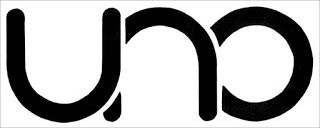The Board affirmed a Section 2(d) refusal to register the mark shown below for various types of pillows, finding a likelihood of confusion with the mark UNO in standard character form, for "office furniture, namely, seating." Applicant contended that is mark "is so stylized that the respective marks have a different appearance and commercial impression," but the Board was not impressed. In re Unclesign Co., Ltd., Serial No. 88123168 (April 20, 2020) [not precedential] (Opinion by Judge David K. Heasley).

The Marks: Applicant argued that its mark "goes far beyond mere variation of 'font style, size, or color' to also include a complex and abstracted interconnectedness that forms a unique design of its own." The Board, however, pointed to several prior decisions finding "highly stylized marks with interconnected letters similar to standard character marks for the same words:" e.g., the "Lite" and "Essentials" cases.
Moreover, Applicant stated in its application that its mark "consists of the word 'UNO' in stylized font." The mark is presented with a mark drawing code of "5," indicating that it is stylized, with no
design feature. See TMEP § 807.18 ("marks comprising stylized letters and/or numerals with no design feature are coded as mark drawing code 5").
In short, prior decisions "reflect the fundamental principle that identical words typically dominate differences in style and design between marks." And so the Board found the marks to be "at least virtually identical in appearance, sound, connotation, and commercial impression."

The Goods: Examining Attorney Joshua M. Galante relied on third-party Internet evidence showing that chairs and pillows are offered at the same retail websites and in the same channels of trade. The Board noted that when the marks at issue are "virtually identical," a lesser degree of similarity between the goods is necessary to support a finding of likely confusion.
It is true, as Applicant notes, that the Examining Attorney's channels-of-trade evidence encompasses both office and household goods, but as the website evidence indicates, office chairs are appropriate for both home and business offices. And we would be blind indeed if we did not note the inexorable movement of late, born of necessity, toward home offices.
Conditions of Purchase: Applicant argued that office furniture buyers are "sophisticated" and will exercise care in their purchases and would be readily able to distinguish between "an office chair and a travel pillow."
Moreover, the standard of care that the Board must apply is "that of the least sophisticated purchaser." Stone Lion Capital Partners v. Lion Capital, 110 USPQ2d at 1163. There is no limitation in the subject application as to price or quality, and so "there is no reason to infer that their purchasers will be particularly discriminating or careful."
Third-party Marks: Applicant claimed that the mark UNO weak and diluted, pointing to five registered marks containing the word "UNO" in the furniture field, but the Board found that "these registrations do not dilute the strength of Registrant's mark or narrow its scope of protection so much as to permit registration of Applicant's mark." Mere registrations without marketplace evidence of use are entitled to little weight. Applicant's other third-party evidence was "a far cry from the large quantum of evidence in Juice Generation.
Actual Confusion: Applicant asserted that there has been no actual confusion, but the Board noted that:
Generally, in an ex parte proceeding a lack of evidence of actual confusion carries little weight, because the cited registrant is not a party to the proceeding and the typical contentions of the applicant's witnesses, to the effect that they are not aware of any instances of actual confusion, tell only one side of the story and are often uncorroborated. See In re Majestic Distilling Co., 315 F.3d. 1311, 65 USPQ2d 1201, 1205 ("we agree with the Board that Majestic's uncorroborated statements of no known instances of actual confusion are of little evidentiary value.")
Moreover the evidence did not establish the extent to which the involved goods overlap in the marketplace, and so the Board could not gauge the opportunity for confusion to have occurred.
Conclusion: Finding confusion likely, the Board affirmed the refusal.
Read comments and post your comment here.
Originally Published 22 April, 2020
The content of this article is intended to provide a general guide to the subject matter. Specialist advice should be sought about your specific circumstances.
